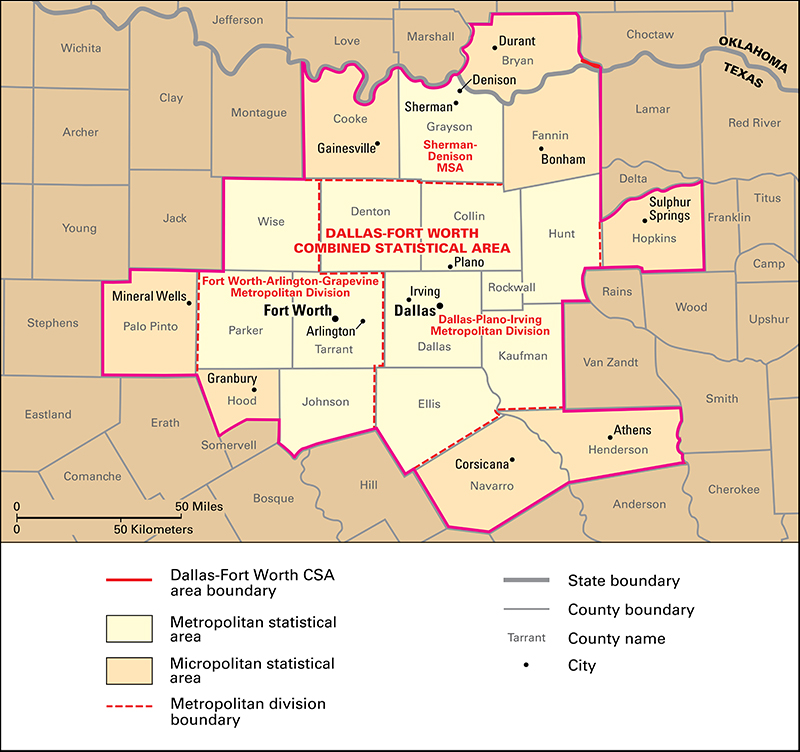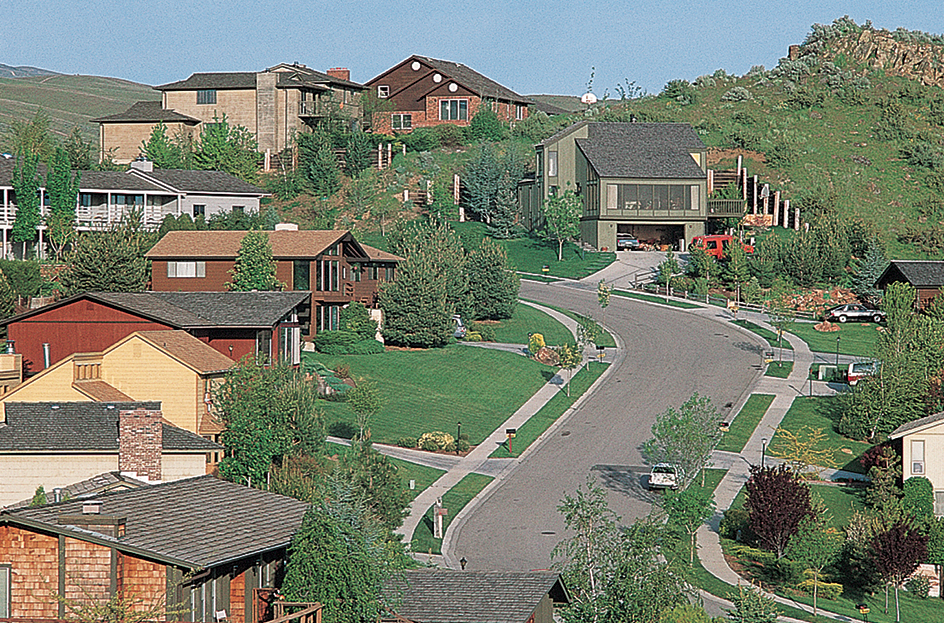Metropolitan area is a densely populated region that consists of a city and its surrounding areas. The main city in a metropolitan area is called the central city. The surrounding areas may include nearby cities, as well as boroughs, counties, towns, townships, and villages. Developed areas surrounding the central city are commonly called suburbs. Such areas usually have strong social and economic ties to the central city. The word greater applied to a city refers to a metropolitan area. For example, Greater Paris includes the central city of Paris and its surrounding suburbs.

About half of the world’s population lives in metropolitan areas. Greater Tokyo is the largest metropolitan area in the world in terms of population. Greater New York City is the largest in the United States. About 85 percent of U.S. residents live in metropolitan areas.
City (table: The 100 largest urban centers in the world)
Defining metropolitan areas
The rules defining metropolitan areas vary from country to country. In some countries, metropolitan areas have definite boundaries. In other countries, the boundaries are not fixed. Countries also use different names and classifications for metropolitan areas. The classifications are generally determined by population totals and other statistics.

In the United States, the Office of Management and Budget identifies metropolitan statistical areas and micropolitan statistical areas. Each metropolitan and micropolitan statistical area consists of a central urbanized area and surrounding communities that have social and economic ties to that area. A metropolitan statistical area must have at least one urbanized area with 50,000 or more inhabitants. A micropolitan statistical area must have an urbanized area with at least 10,000 people. In some cases, neighboring metropolitan or micropolitan statistical areas may join to form combined statistical areas. Some large metropolitan statistical areas include smaller units called metropolitan divisions.
In Canada, a census metropolitan area includes a central city and the surrounding areas that have employment ties. In the United Kingdom, clusters of small cities around a large city are called metropolitan counties. Metropolitan counties are usually divided into smaller metropolitan districts or boroughs. The United Nations uses the term urban agglomeration to refer to a central city and the heavily settled area around the city boundaries. A region that consists of two or more large metropolitan areas is often called a megalopolis.
The development of suburbs
As cities have grown, people have moved beyond official city boundaries, creating suburbs. This process of suburbanization began in the late 1800’s and continues today. Numerous factors have contributed to suburbanization and the development of metropolitan areas.
In the late 1800’s and early 1900’s, large numbers of people came from rural areas to central cities in search of employment. This population shift produced overcrowded cities, causing many people to move to outlying areas. In addition, increases in income and improvements in transportation—such as the development of railroads and automobiles—enabled people to live farther from where they worked. The use of automobiles increased tremendously following the end of World War II in 1945. As a result, more and more people began to settle in communities outside of central cities. In some countries, including the United States, more people in metropolitan areas now live in suburbs than in central cities.

Many people moved to the suburbs to avoid such problems of city life as crime, housing shortages, and racial conflicts. However, as the suburbs have grown larger, many have developed the same kinds of problems. These problems, as well as urban revitalization programs, have persuaded some people to move back to central cities. Nevertheless, suburban populations continue to grow at faster rates than central city populations.
People who live in the suburbs of a central city have traditionally considered the city as their workplace because of its commercial and industrial activities. Suburbanites have also used the city’s cultural, professional, and recreational facilities and services. Since the 1950’s, however, many businesses and industries have moved to the suburbs. Today, many suburbanites work, shop, and enjoy recreational activities in the suburbs. Some rarely visit the city.
Problems of metropolitan areas
The process of suburbanization has raised a number of difficult issues for federal, state, provincial, and local governments. Government administrators often find it difficult to coordinate policies and funding to meet the needs of communities.
Units of government.
Some countries, including many European nations, give their federal governments authority to make decisions regarding specific metropolitan area policies and affairs. But in other countries, including the United States, most metropolitan areas have no central government to handle problems that affect the entire area. In many cases, government is almost completely decentralized—that is, each city, town, village, or other community in the metropolitan area has its own government. Each unit may have considerable political independence, with little or no relationship to other units in the area. As a result, government in many metropolitan areas is characterized by overlapping authority, policy conflicts, inefficiency, and lack of cooperation in solving problems.
Many people who live in a metropolitan area may be affected by government policies over which they have little or no control. For example, a person who lives in a suburb may vote in the suburb and, at the same time, own a business in the central city. Government policy decisions made in the city may affect the business, even though the suburbanite cannot vote on them.
Finances and taxation.
A population shift from central cities to suburbs affects the financial position of all the communities involved. A central city may suffer declining land values and loss of tax revenues. Also, many people who move into the city are poor, and many who move out are wealthy. As a result, the city may be forced to provide medical care and other services for large numbers of residents who cannot afford them.
The movement of industries and commercial activities to the suburbs may deprive city residents of job opportunities and further reduce the city’s tax base. On the other hand, many suburban communities are almost completely residential and have few taxable businesses. Such suburbs therefore may have difficulty raising enough money to provide adequate levels of such essential services as police and fire protection and public education.
Many suburban residents use public facilities in the central city, including museums, parks, and sports arenas, all of which require expensive maintenance. Some cities have tried to tax suburban residents who work in the city or to charge nonresident fees for the use of city facilities. Similarly, some suburbs have attempted to impose a tax on city dwellers who work in the suburbs or use facilities there. But most such tax plans have failed.
In many countries, property taxes are a major source of revenue for governmental units within a metropolitan area. As a result, the central city and its suburbs compete for such taxpaying developments as manufacturing plants, office buildings, and shopping centers. These types of developments pay high property taxes and use few expensive public services. Since the late 1900’s, however, many metropolitan areas have worked to slow or stop suburban growth in order to reduce maintenance costs and to protect the suburban way of life.
Metropolitan area programs
Governments throughout the world have developed a variety of programs to solve the governmental and financial problems of metropolitan areas. These plans try to provide efficient government and a well-balanced economic policy for an entire metropolitan area. In most cases, however, local governments want to retain control over such activities as education, police and fire protection, and zoning. In many cases, this desire for local political independence has hampered efforts to develop effective plans.
Programs used in providing more efficient government and financing for metropolitan areas include (1) annexation, (2) extramural jurisdiction, (3) county government, (4) special districts, (5) metropolitan federation, (6) councils of government, and (7) tax sharing.
Annexation.
Most cities grew to their present size by annexing (attaching) surrounding areas. Through annexation, a city expands its boundaries and brings outlying areas under the authority of the city government. Today, however, suburban residents generally oppose this method because they do not want to lose governmental independence.
Extramural jurisdiction.
Some states and provinces give central cities governmental control of areas outside their boundaries. Powers of extramural jurisdiction, also called extraterritorial powers, often include police protection and sanitation regulation. They also may cover taxation of businesses and the control of subdivisions beyond city lines.
County government.
Counties are traditional divisions of local government in the United States, the United Kingdom, and many other countries. County governments often provide services for central cities and for areas outside city limits. In counties where large cities occupy the entire county area, city and county governments may form a single unit. In counties that are only partly covered by a city, the city and county may share responsibility for providing services to county residents.
Special districts,
also called municipal authorities, provide one or more specific government services, such as sewage disposal, water distribution, or public transportation. The governing boards of special districts have the power to levy taxes and to spend public money. The responsibilities of special districts often overlap those of city governments and other local governments.
Metropolitan federation
combines all the local governments of a metropolitan area into a unit called a federated city, or consolidated city. The local units retain their own identities and carry on certain functions that they are best suited to handle, such as education, zoning, and police protection. The federated city administers the remaining functions for the entire metropolitan area. It has the taxing power to finance such functions, plus the authority to establish and carry out policies.
Councils of government
, often called COG’s, allow officials from various governments within a metropolitan area to discuss policy decisions. Such councils are generally only advisory bodies and lack the authority to create laws or regulations, but they do allow important interaction between metropolitan units.
Tax sharing
allows communities in a metropolitan area to share the costs and benefits of development. In a tax-sharing plan, part of the revenue a community gains from a new tax-producing development is distributed among other communities that are affected by the development. For example, the construction of a shopping center in one community may cause heavier traffic in neighboring communities. Tax sharing would help the neighboring communities pay for the increased costs of maintaining their roads.
See also City (Metropolitan cities) ; Megalopolis ; Suburb.
